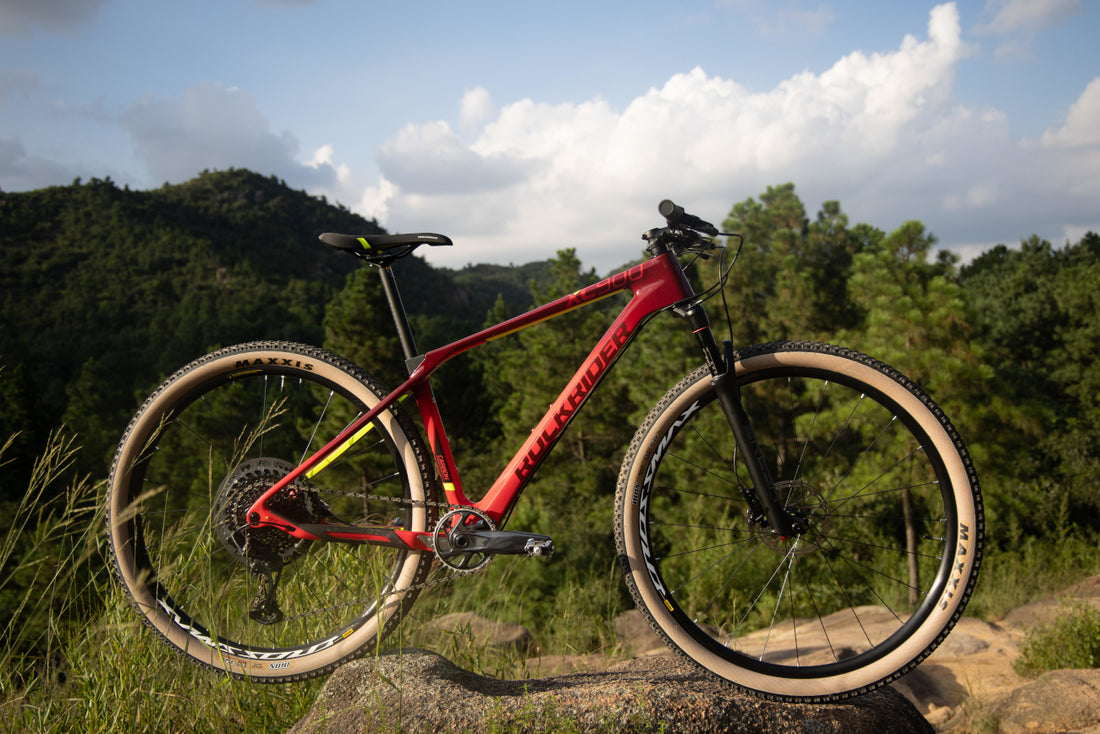So your child has grown out of their mountain bike and needs a new one. But what should you do with their old bike? Sell it! But if you're going to get a good price for it, there are a few things to check. Give your old mountain bike a second life and recoup some of the cost of a new one. What more could you want?
Spruce up your mountain bike
You should never judge a book by its cover, but it's inevitable that your bike will be judged by its general appearance. At the very least, clean the bike to get rid of any mud, and remove any stickers and other things that made the bike personal for you but that a potential buyer might not be interested in. To sell a second-hand bike at the best price, it can be useful to provide receipts from any services or maintenance you've had done on the bike if you've kept hold of them. This will reassure your customer that everything's in good condition. It's also particularly important as they need to be able to trust their mountain bike before throwing themselves down a hill on it.
Brakes
The brakes are vital for riding safely and must be in perfect condition when you sell your bike. The cables and housing must also be intact, and the pads shouldn't be too worn. If that's not the case, but you don't want to change the brake system yourself, let the buyer know, as it's something they'll be able to do themselves fairly easily.
The bearings
A mountain bike that rides well is one whose bearings are in good condition. Your buyer will no doubt want to check them before buying the bike, so it's worth checking them yourself beforehand. You'll find them in the headset, the bottom bracket, and the wheels. Healthy bearings are ones that aren't seized up. You therefore need to check that they're not offering any resistance as they spin. The headset should turn without resistance, and the bottom bracket and wheels shouldn't creak.
The chain and drivetrain
Derailing right in the middle of a ride is probably the cyclist's worst nightmare, after getting a puncture. Particularly with kids' bikes, when the child is just getting to grips with gear changes. By assuring your buyer that the bike's chain and drivetrain are in good condition, you're reassuring them that their child can ride safely. Obviously, the chain can still come off during a fall, but you can hardly blame the bike for that. Make sure the chain is taut, tighten the derailleurs if it isn't, and lubricate it a bit to reduce wear.
Tires and wheels
These are the easiest things to change on a second-hand bike, so it's worth doing so if needed as you'll get a better price for your bike. At the very least, give the tires a good clean, especially if the wheels have been zooming through muddy puddles. If you suspect that the inner tube might be leaking, take the tire off and submerge it in a bowl of water to see whether any air is escaping. Last but not least, make sure the rims are in good condition.
How to sell your second-hand bike
Selling a second-hand bike at the right price, based on its condition and market value, is somewhat of a balancing act. If you have the original receipt, this can help you set a resale price, particularly if it means you can prove to the buyer how long you've had the bike and how much it'd cost new. There are some websites that'll give you a suggested price. Alternatively, you could ask the opinion of a professional: either the shop where you're planning to buy your new mountain bike, or the one where you bought the old one.
Once you've settled on a price, decide on your negotiating margin and the lowest price you're willing to accept. This will put you more at ease when talking to the buyer.
Where to sell your second-hand bike
You have several options: use a customer-to-customer website, or sell it via a shop. The benefit of websites where you can sell direct to other people is that you can set the price you want, but the downside is that you risk being very busy if your bike proves popular. On the other hand, if you sell it via a shop, you won't have to worry about any of that. The price is set by the seller based on the bike's retail value. They'll take a commission for their work and you'll get your money once the sale has been completed. Plus, it's generally the shop that deals with any post-sale issues with the buyer.
















